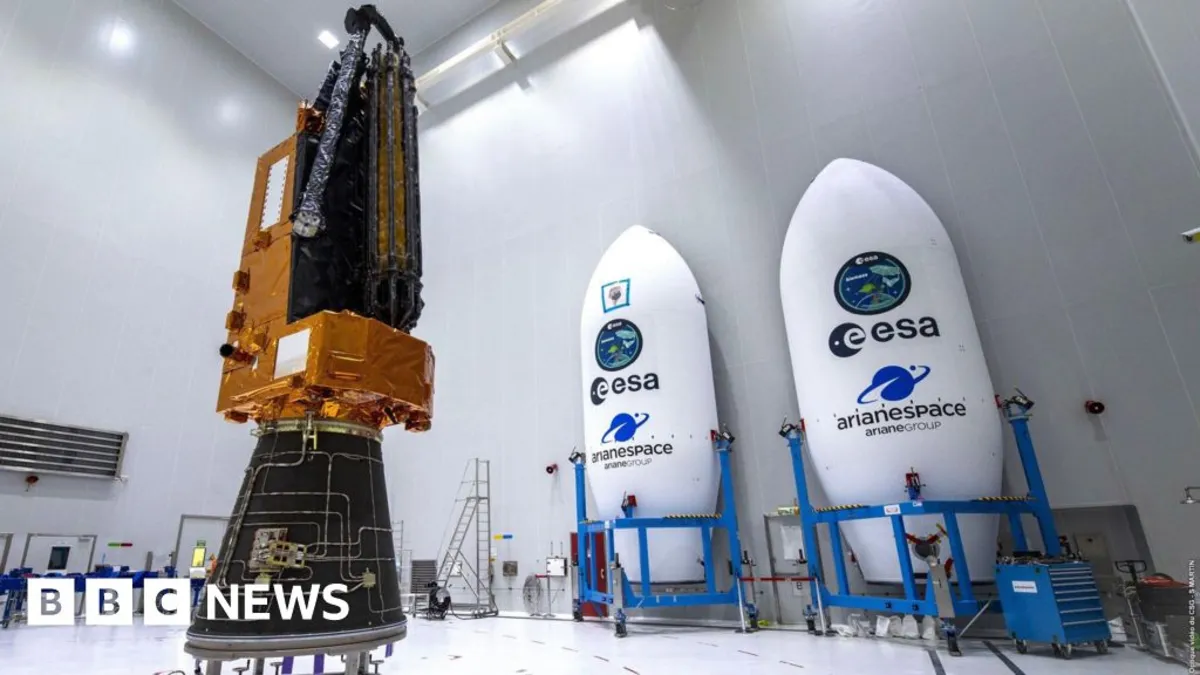
A pioneering satellite, known as the Biomass satellite, is scheduled to launch on Tuesday, marking a significant advancement in our ability to monitor global forests and their role in combating climate change. Developed by the European Space Agency (ESA), this innovative satellite will have the unique capability to see through clouds and dense foliage, enabling scientists to accurately assess how forests are protecting the planet from harmful climate impacts.
The Biomass satellite will weigh the Earth’s forests, providing crucial insights into the amount of carbon dioxide stored in trees, which helps mitigate the effects of climate change. Until now, calculating the carbon stored by the estimated 1.5 trillion trees in the world’s rainforests has been an arduous task, largely due to limitations in existing technology. Led by the British aerospace company Airbus, this groundbreaking project aims to enhance our understanding of climate change modeling and track deforestation rates with unprecedented accuracy.
The Biomass satellite is set to launch at 10:15 BST from the ESA's Kourou spaceport located in French Guiana. Affectionately dubbed the "space brolly," this satellite features a giant 12-meter diameter antenna that expands outward. This special antenna employs radar with a very long wavelength, which allows it to penetrate deeper into forests and reveal branches and trunks that are typically obscured by the canopy. Dr. Ralph Cordey, the head of geosciences at Airbus, explained, “Most radars in space today provide excellent images of icebergs but struggle to penetrate forested areas, only capturing the tops of trees.”
Weighing in at 1.2 tonnes, the Biomass satellite utilizes a technique similar to a CT scan, analyzing slices through trees during repeat passes. This method will help create a detailed picture of the woody material present in forests, which can serve as a proxy for the volume of carbon stored within. Currently, scientists have relied on measuring individual trees and extrapolating data, a method that poses significant challenges. According to Prof. Mat Disney, a professor of remote sensing at University College London, “Our current understanding is patchy due to the complexities involved in measuring such vast quantities of carbon across 1.5 trillion trees in the tropics.”
Following the successful launch of the Biomass satellite, ground measurements will continue to validate the data it collects. The team anticipates producing the first comprehensive maps within six months of the launch, with ongoing data collection planned over the next five years. These annual maps will provide insights not only into how much carbon is stored in forests but also how much is being lost due to deforestation.
One of the key benefits of the Biomass satellite’s longer radar wavelength is its ability to penetrate clouds, offering a consistent and comparable view of forests year after year. Prof. Disney noted, “For the past 50 years, observations from other satellites like Landsat have been heavily affected by cloud cover, especially in tropical regions where clouds are prevalent.” This capability is crucial for accurately tracking changes in forest cover and carbon storage.
The scientists who have dedicated over two decades to this project are motivated by the potential impact of their findings. Dr. Cordey stated, “It’s exciting because it’s going to shed light on how our forests and trees—elements we often take for granted—contribute to the processes that govern our planet, particularly those related to climate change.” The insights gained from the Biomass satellite will be vital for understanding and addressing the challenges posed by climate change in the future.